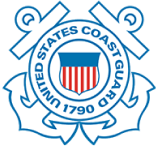1-800-832-7191
Lateral Aids: Buoys and Beacons

We like to start with “Buoys float and Beacons are fixed” Both can be found on your nautical charts. And yes, it is illegal to tie off to either. The US Coast Guard has their hands full already so let’s not give them more to do.
WHERE DID IT START?
In the thirteen to fourteen hundreds buoys started as wooden rafts tied to rocks. Ingenious I might add! Then they started using empty barrels again tied to rocks. Soon thereafter we began to use what looks like the modern day buoys we see on the water today.
WHY DO WE NEED BUOYS?
Buoys are used to mark channels, land formations, dangers, shallow waters, and just about anything that is important to a boat operator. This is also whey they are charted. Did you know? One can triangulate their position using an on-station buoy. When one ties off to a buoy, you can pull it “off-station” they call it.
DO I NEED TO ALWAYS STAY BETWEEN THE BUOYS?
Good question. One can travel outside a buoy system but one does that at their own risk. Often times the lateral markers in a channel, or the red and green buoys, mark the edges of a channel. While travelling a channel it is always smart to stay in the channel on the designated side. Red Right Returning is what we use here in America. While returning from open waters, keep the red markers on the right-hand side of the vessel. On the other hand, Green, Going, Out. While leaving your channel keep the green on the right when heading out to open waters.
IN CONCLUSION
There is a whole world of buoys out there! If you like to operate on coastal waters, you absolutely should brush up on the buoy systems.
Here is the USCG PDF on Buoys. Contact Us any time with inquiries as we are always happy to help.